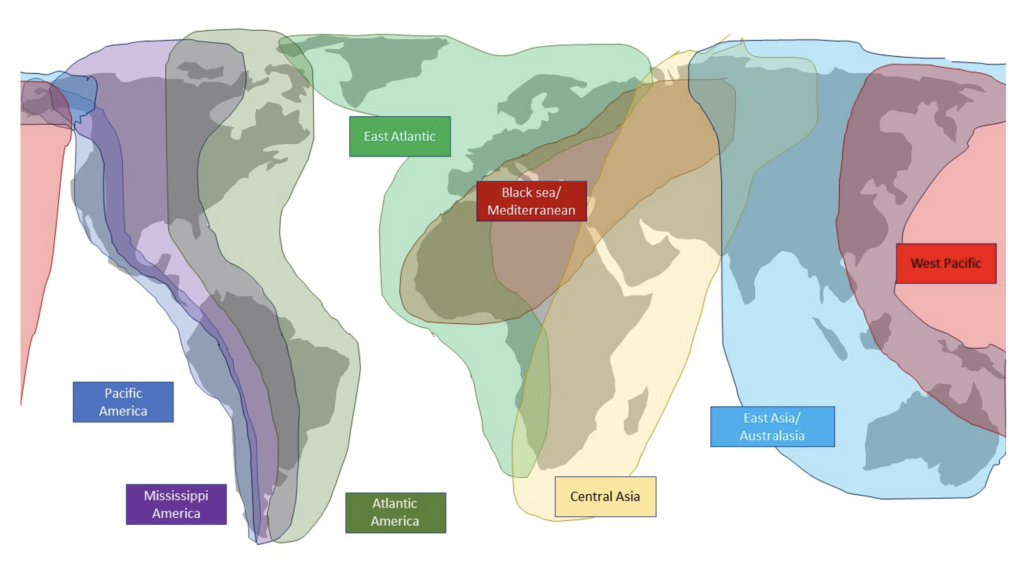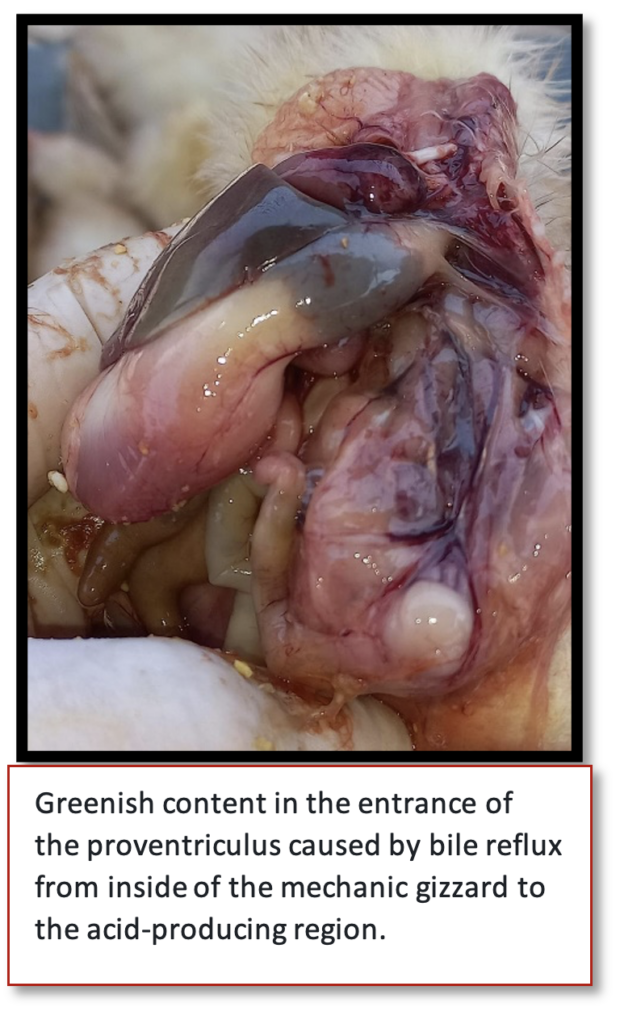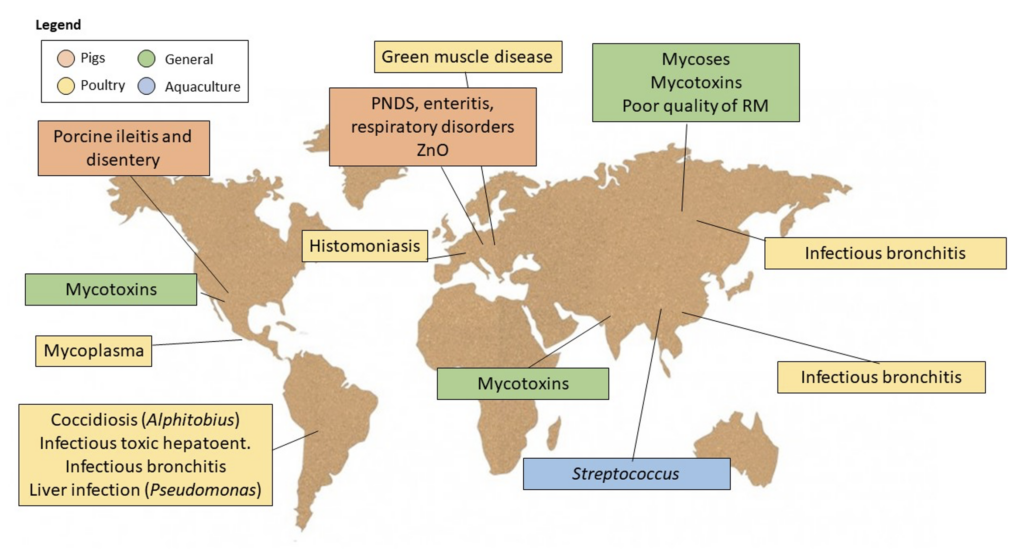
Main migratory routes of birds. They travel from North to South in October and can act as vectors of diseases between different geographic regions.
General analysis
The situation starts to change in the two hemispheres: in the Northern hemisphere, temperatures fall and moisture increases. On the contrary, in the Southern hemisphere, temperatures start to raise.
These temperature changes promote the production of mycotoxins by fungi that may be present in the crops, raw materials, and stored feeds, which makes the monitorization of the contamination essential to apply effective prevention tools against mycotoxicosis.
During this new season, migratory birds travel to places with better environmental conditioners. In October, they travel from North to South, looking for warmer regions. The movement of these birds helps to transmit diseases, particularly viral problems such as adenovirus, Marek and Gumboro’s diseases or infectious bronchitis, between different geographical areas.
Analysis of geographic areas
This October of 2021, the following issues were described in poultry and pig farms in the different world areas:
· Asia
In China, hydrosalpingitis related to the avian infectious bronchitis virus has been observed in layers and broilers. Migratory birds that travel to Southern areas act as vectors for this disease and will cause outbreaks in Southeast Asia.
The rains that were affecting some areas of the North of Asia have led to the proliferation of fungi in the crops. These infectious agents cause mycosis in animals and produce mycotoxins, toxic substances that reach the animals through the ingestion of contaminated feed. This weather has caused the spoilage of grains, so that the nutritional quality of balanced feed from the area has decreased markedly because of the poor quality of raw materials, making it impossible to reach optimum performance results.
In the Middle East, high mycotoxin contaminations were detected, particularly of aflatoxins; while several Streptococcus outbreaks were observed in tilapias in the Southeast of Asia, particularly during transportation and fish manipulation, as well as in the latter stages of production, despite vaccinating the fish.
· Russia and Ukraine
In 2021, grain production costs in the Russian speaking countries have increased by 36% compared to the previous year. With the aim to reduce the costs of feed manufacturing, the use of alternative and low-quality raw materials has become a common practice. This poses a problem for productive performance and animal health since low-quality raw materials do not supply enough nutrients and contain infectious agents, such as fungi and bacteria, as well as toxic substances such as mycotoxins.
The inclusion of alternative raw materials in the feed is not always accompanied with the enzymes necessary to digest them, leading to a greater presence of undigested feed in the gut, which, in turns, leads to the proliferation of clostridium perfringens, the causing agent of necrotic enteritis.
· Europe
In poultry farms, deep pectoral myopathy (also called green muscle disease) was diagnosed. This disease is related to oxidative stress and depends on genetic and nutritional factors.
Histomoniasis caused by parasites that infest the ceca and liver affects turkey farms, though it can also infest laying hens.
Pig farms suffered from secondary problems (pneumonias and enteritis) related to the immunosuppression caused by Actinobacillus suis, the causing agent of Porcine Nephropathy and Dermatitis Syndrome (PNDS). This disease is transmitted vertically and causes immune deficiency in piglets. This condition spreads cranially as the animals grow, and other microorganisms take advantage of it to cause infections at a digestive and respiratory systems, among others.
The use of zinc oxide at high concentrations will no longer be permitted from mid-2022. For this reason, European pig producers are looking for effective alternatives, particularly in weaned piglets to control gut welfare.
Some problems related to rumination in dairy cattle during the transition period were observed as well.
· Latin America
Broiler producers suffered from coccidiosis outbreaks related to the presence Alphitobius in the farms. Alphitobius is an insect that acts as a vector of this parasitosis and other diseases, as it accumulates high amounts of oocysts in the organisms and birds get heavily infested when eating the insect.

Some Mycoplasma-related problems were observed, too, causing respiratory issues. Infectious bronchitis virus caused hydrosalpingitis in the area, and infectious toxic hepatoenteritis (ITHE) was observed in the form of liver and intestinal problems. The causing agents of ITHE include Salmonella, E. coli, Proteus, and Salmonella.
Liver infections by Pseudomonas led to an excess of bile production in chickens, which was secreted at an intestinal level but reached upper parts of the digestive tract, producing greenish lesions in the ventriculus and proventriculus.
Analyses of raw materials showed high mycotoxin contamination levels, especially in Mexico and Central America. Other issues observed in the same area were porcine ileitis and dysentery, caused by Lawsonia intracellularis and Brachyspira hyodystenteriae, respectively.
